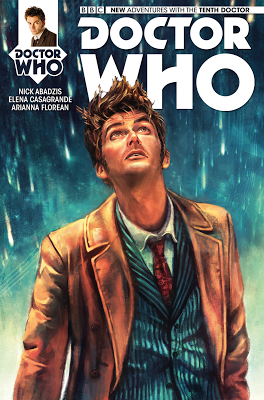The Lost Stories: Lords of the Red Planet
Friday, 19 September 2014 - Reviewed by
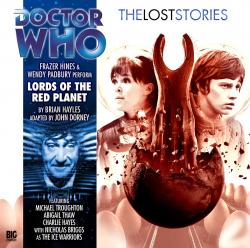
The Lost Stories: Lords of the Red Planet
Written by Brian Hayles
Adapted by John Dorney
Directed by Lisa Bowerman
Released Nov 2013 by Big Finish
Lords of the Red Planet is based on another unproduced idea by Brian Hayles, and was to be the original follow-up to The Ice Warriors. It was abandoned in favour of The Seeds of Death, quite possibly because it would have used up an entire series worth of budget trying to create three distinct reptilian species and an underground city, mines, and a rocket on Mars!
As with The Queen of Time, Hayles' original storylines have been adapted into scripts for Big Finish, this time by John Dorney, and with the cast again led by Frazer Hines and Wendy Padbury. It's an origin story, a sort of 'Genesis of the Ice Warriors' - which sees the Second Doctor, Jamie, and Zoe arriving on Mars in its distant past, only to be caught up in terrible events that see the fall of one race and the rise of another. Troubled scientist Quendril works around the clock genetically 'sculpting' an army for the cruel dictator Zaadur on pain of death for his people, and the arrival of the TARDIS crew in the subterranean city of Gandor only makes things worse....
The Ice Warriors have traditionally been a bit of a blank slate throughout their history, arguably they've barely been explored beyond The Curse of Peladon's twist of Izlyr and Ssorg being good guys. Some attempt to flesh them out was made more recently by Mark Gatiss in Cold War, but Lords of the Red Planet looks at the bigger picture, and with greater effect.
We meet the reptilian martian race that created the Ice Warriors; the aforementioned Quendril (played by Michael Troughton) as well as the prototype Ice Lord Aslor, and one of Quendril's 'failed' experiments, his assistant Risor - both played by Nick Briggs, also on Ice Warrior duty. Briggs does an excellent job of breathing (hissing?) life into two distinct characters, with the tragic Risor being reminiscent of Condo from The Brain of Morbius. His Ice Lord, Aslor (a dead ringer for Alan Bennion's Ice Lords of the 60s and 70s), bonds with Zoe, and fights against his warlike conditioning, showing great pathos.
Quendril, meanwhile, struggles with the consequences of his work, and is highly distressed at the pain he is forced to put his test subjects through. Michael Troughton excels here, despite the horrific nature of Quendril's work, he comes over as sympathetic, no small feat when you realise he's essentially a Davros figure.
We also get an insight into the society of a dying world dependent on daily doses of 'life drink', with the spoiled, vain, puppet Princess Veltreena, (played by Charlie Hayes, daughter of Wendy Padbury) as its figurehead. Even the villainess of the piece, Zaadur, played by Abigail Thaw, has a brief moment of sympathy, when it's revealed that she too is the product of genetic experimentation and has gone through similar agonies to Aslor and Risor. Thaw is excellent, and gives a very strong performance. Dorney's decision to change Zaadur from male to female is a masterstroke, although, as with The Queen of Time, it does remind you of the Troughton era's lack of female foes.
Hines and Padbury are great as ever, with Hines doubling up again as Jamie and the Doctor. Zoe has a meaty part, acting as Aslor's conscience, and ripping the electrodes from him as he is being agonisingly 'brain-formed' by Quendril's process. Jamie is more involved with the rough stuff, but gets a nice scene with Veltreena, who is clearly flirting with him, despite being unsure of what exactly he is. Hines is as good as ever, and sounds like he's stepped straight out of The War Games. Padbury is excellent as well, but sounds like she's struggling to get Zoe's pitch right at times.
Lastly, Hines' uncannily accurate Second Doctor is present in full effect, and is almost flawless - it's only occasional lines of over-wordy dialogue that don't ring true, but the speech patterns, tone, and attitude are all there, and it's a joy to hear. Lords of the Red Planet is a real treat, and a fine bit of world-building, classic in feel, but quite modern at the same time, with real moral dilemmas nestling alongside sonically perfect hissing Ice Warriors and rumbling tympani straight out of The Seeds of Death.
Even if Big Finish isn't your thing, Troughton fans in particular should snap this up. A triumph.
Sssssssuperb.
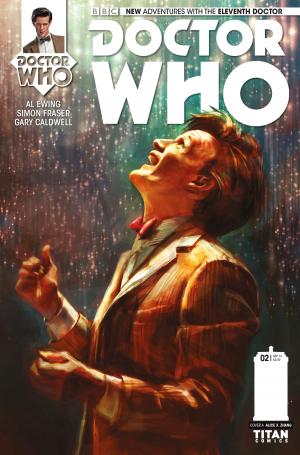
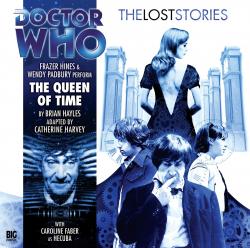
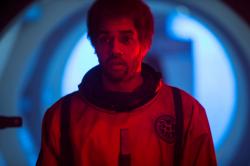
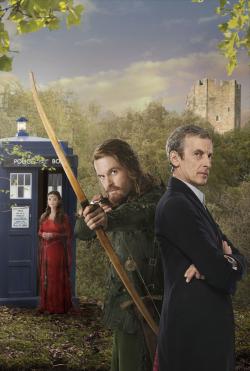
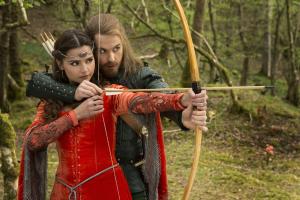
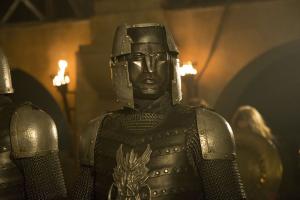 The episode has a lot of snappy elements to enjoy. One of the really funny moments involves a contest to find the best archer in land. The Doctor's marksmanship being top-notch somehow feels right for the Twelfth Doctor, and it is good to see him with a weapon other than sonic screwdriver .. for a few moments anyway. The prize of the golden arrow is tied into plot well, making this sequence not only entertaining but also key to the story. Less positively some dialogue comes off as cod-mediaeval, reminding me of '
The episode has a lot of snappy elements to enjoy. One of the really funny moments involves a contest to find the best archer in land. The Doctor's marksmanship being top-notch somehow feels right for the Twelfth Doctor, and it is good to see him with a weapon other than sonic screwdriver .. for a few moments anyway. The prize of the golden arrow is tied into plot well, making this sequence not only entertaining but also key to the story. Less positively some dialogue comes off as cod-mediaeval, reminding me of '